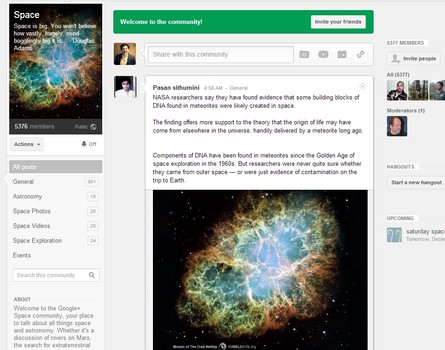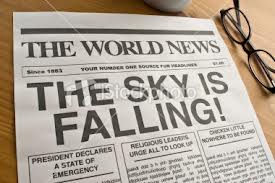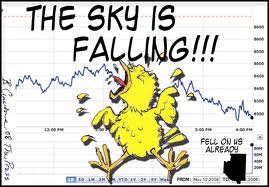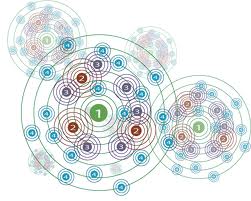 Welcome to O.D. Fridays at DonorDreams blog. Every Friday for the foreseeable future we will be looking more closely at a recent post from John Greco’s blog called “johnponders ~ about life at work, mostly” and applying his organizational development messages to the non-profit community.
Welcome to O.D. Fridays at DonorDreams blog. Every Friday for the foreseeable future we will be looking more closely at a recent post from John Greco’s blog called “johnponders ~ about life at work, mostly” and applying his organizational development messages to the non-profit community.
It is that time of the year when non-profit leaders set the stage for the next year. This time of the year is always critical and tripping up usually means the next year won’t be a banner one. Here is just a small sampling of what is on the plates of many non-profit executive directors:
- Budget construction
- Resource development / revenue planning
- Program planning
- Year-end holiday fundraising and stewardship strategies
- Working with the board development committee to complete year-end board volunteer evaluations
- Developing annual performance plans for the upcoming year for staff
- Completing year-end evaluations
Interesting enough, in my experience, it is the last three bullet points that get swept under the rug by so many non-profit organizations.
Today’s blog post is short and sweet because it is the end of the Mayan calendar and I have a few things to do before the world ends. So, please ask yourself the following questions:
- Are you anxious about evaluating your employees?
- Have you neglected to put 2013 annual performance plans together for your staff?
- Have you let your Board Development / Board Governance Committee off the hook yet again when it comes to year-end board evaluations?
If you answered ‘YES’ to any of these questions, then please “click-through” and read John’s most recent post titled “There Is No Crying In Performance Reviews!”
Not only does he “hit the nail on the head,” but I don’t have any personal stories that are better than the ones he shares.
If you didn’t get a chance to read this month’s guest post from Dani Robbins, then you may want to click here and circle back to her thoughts on year-end evaluations for board volunteers. I urge you to consider what Dani says and compare it to John’s post about employee evaluations. Does John’s organizational development insights and suggestions also ring true when it comes to year-end board member evaluations. If so, what can you do to support your Board Development Committee to have “AUTHENTIC” and “GENERATIVE” conversations with their peers?
Enjoy the last day of civilization as we know it (just kidding) . . . and Here’s to your health!
Erik Anderson
Founder & President, The Healthy Non-Profit LLC
www.thehealthynonprofit.com
erik@thehealthynonprofit.com
http://twitter.com/#!/eanderson847
http://www.facebook.com/eanderson847
http://www.linkedin.com/in/erikanderson847

 Yesterday morning Jimmie Alford died of an apparent heart attack at the age of 69. This sad news started circulating slowly as the day unfolded, and then it snowballed into an online viral event and my email inbox is full of people sharing the news, their grief, and their disbelief.
Yesterday morning Jimmie Alford died of an apparent heart attack at the age of 69. This sad news started circulating slowly as the day unfolded, and then it snowballed into an online viral event and my email inbox is full of people sharing the news, their grief, and their disbelief. It is that time of the year when retailers are pulling out every stop in their little bag of tricks to get your attention and hopefully your holiday dollars. One of those shiny objects that some retailers use is called cause related marketing (CRM). Wikipedia does a nice job of
It is that time of the year when retailers are pulling out every stop in their little bag of tricks to get your attention and hopefully your holiday dollars. One of those shiny objects that some retailers use is called cause related marketing (CRM). Wikipedia does a nice job of 



 Welcome to O.D. Fridays at DonorDreams blog. Every Friday for the foreseeable future we will be looking more closely at a recent post from John Greco’s blog called “
Welcome to O.D. Fridays at DonorDreams blog. Every Friday for the foreseeable future we will be looking more closely at a recent post from John Greco’s blog called “ In that five-minute period of time as I paced the back of the banquet hall, there was a moment where I stopped listening and worrying about LaShaunda and I focused on what was happening in the room:
In that five-minute period of time as I paced the back of the banquet hall, there was a moment where I stopped listening and worrying about LaShaunda and I focused on what was happening in the room: When I hear one donor say something once, I chalk it up to something interesting. When I hear two donors say the same thing, I usually think it is an interesting occurence. However, when three or more donors express the same sentiment, I sit up . . . take notice . . . and treat it like a potential trend.
When I hear one donor say something once, I chalk it up to something interesting. When I hear two donors say the same thing, I usually think it is an interesting occurence. However, when three or more donors express the same sentiment, I sit up . . . take notice . . . and treat it like a potential trend. While fear is irrational, it definitely impacts human behavior. I believe most students learn this in Psychology 101. So, if people “think” the sky is falling, it is falling regardless of the facts.
While fear is irrational, it definitely impacts human behavior. I believe most students learn this in Psychology 101. So, if people “think” the sky is falling, it is falling regardless of the facts. Here are a few quick tips you may want to remember when jumping into these discussions:
Here are a few quick tips you may want to remember when jumping into these discussions: This morning I am asking for your help with a small project I am working on. A few weeks ago I agreed to help one of my favorite non-profit organizations with a staff transition. Not only did their development director move on to greener pastures at the end of the summer, but their executive director also recently resigned. So, the board asked me to step into the void and help their management team with a variety of year-end miscellaneous projects (e.g. year-end holiday mailing, 2013 budget construction, resource development plan, etc).
This morning I am asking for your help with a small project I am working on. A few weeks ago I agreed to help one of my favorite non-profit organizations with a staff transition. Not only did their development director move on to greener pastures at the end of the summer, but their executive director also recently resigned. So, the board asked me to step into the void and help their management team with a variety of year-end miscellaneous projects (e.g. year-end holiday mailing, 2013 budget construction, resource development plan, etc). This question was inspired by a string of two or three grants in a row that this organization had just written. As a businessman, he asked this question because he is accustom to looking at everything through a “return on investment” (ROI) lens. In hindsight, this is what he saw:
This question was inspired by a string of two or three grants in a row that this organization had just written. As a businessman, he asked this question because he is accustom to looking at everything through a “return on investment” (ROI) lens. In hindsight, this is what he saw: Seriously, your feedback this morning will directly help another organization in its pursuit of developing fundraising best practices. Your participation will take all of a minute or two this morning. Please weigh-in. Your collective wisdom is massive and will bring tremendous value to this organization’s discussion. You can consider the few minutes that you invest in responding to this request as your “good turn” this holiday season. Please pay it forward!
Seriously, your feedback this morning will directly help another organization in its pursuit of developing fundraising best practices. Your participation will take all of a minute or two this morning. Please weigh-in. Your collective wisdom is massive and will bring tremendous value to this organization’s discussion. You can consider the few minutes that you invest in responding to this request as your “good turn” this holiday season. Please pay it forward!



 Welcome to O.D. Fridays at DonorDreams blog. Every Friday for the foreseeable future we will be looking more closely at a recent post from John Greco’s blog called “
Welcome to O.D. Fridays at DonorDreams blog. Every Friday for the foreseeable future we will be looking more closely at a recent post from John Greco’s blog called “ Moreover, whenever I see non-profit organizations and both staff and board leaders practicing this Taoist approach of “sitting still” and waiting for things to happen, I’ve often observed a train wreck shortly thereafter. However, I know that there are times when John is 100% right and this approach is warranted.
Moreover, whenever I see non-profit organizations and both staff and board leaders practicing this Taoist approach of “sitting still” and waiting for things to happen, I’ve often observed a train wreck shortly thereafter. However, I know that there are times when John is 100% right and this approach is warranted. I was recently engaged in an engaging discussion about board development with a great group of non-profit board volunteers. The range of topics in that conversation spanned issues such as prospect identification, evaluation methods, prioritizing prospect lists, cultivating prospects, recruitment process, orientation, recognition, and evaluation. It was one of those conversations that a facilitator loves because everyone was engaged and actively participating. There was an energetic dynamic in the room, and then someone asked a really tough question:
I was recently engaged in an engaging discussion about board development with a great group of non-profit board volunteers. The range of topics in that conversation spanned issues such as prospect identification, evaluation methods, prioritizing prospect lists, cultivating prospects, recruitment process, orientation, recognition, and evaluation. It was one of those conversations that a facilitator loves because everyone was engaged and actively participating. There was an energetic dynamic in the room, and then someone asked a really tough question: For decades (and probably centuries), board development committees have answered this question the old fashion way. They sat down around a table and talked it over. Those committees who were successful had a diversity of people sitting around the table and were able to assess a prospect’s social network in an anecdotal manner. They talked about what they see and hear about the prospect. Here are just some of the things they most likely talked through:
For decades (and probably centuries), board development committees have answered this question the old fashion way. They sat down around a table and talked it over. Those committees who were successful had a diversity of people sitting around the table and were able to assess a prospect’s social network in an anecdotal manner. They talked about what they see and hear about the prospect. Here are just some of the things they most likely talked through: However, there are some “21st Century” tools that your board development committee might want to start using when talking through the issue of a prospect’s network. Consider the following:
However, there are some “21st Century” tools that your board development committee might want to start using when talking through the issue of a prospect’s network. Consider the following: